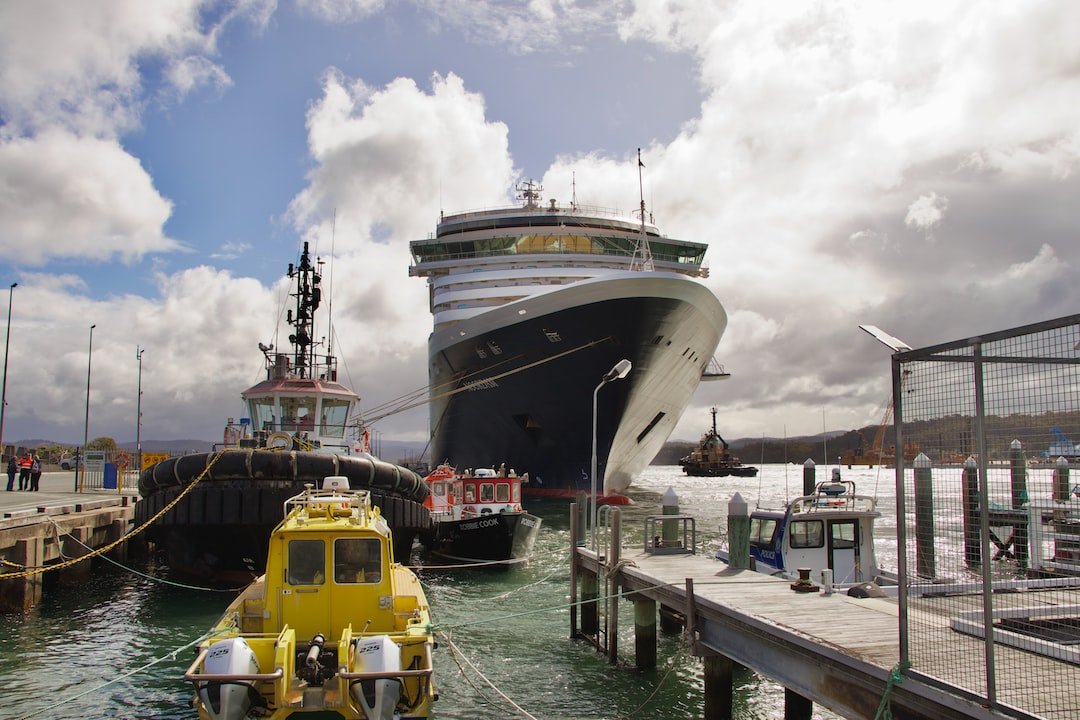Understanding the Importance of Environmental Impact Assessments for Port Expansion Projects
Category : Port Expansion Development Plans Infrastructure Upgrades | Sub Category : Environmental Impact Assessments for Port Expansion Posted on 2023-07-07 21:24:53

Understanding the Importance of Environmental Impact Assessments for Port Expansion Projects
Introduction
Increasing global trade, maritime activities, and economic development have led to a need for port expansions. It is important to consider the environmental consequences of such projects. Environmental Impact Assessments are important in ensuring responsible and sustainable port expansion. In this article, we discuss the significance of conducting EIAs and how they help mitigate environmental risks associated with port development.
Environmental impact assessments are what they are.
Environmental Impact Assessments are done before any significant infrastructure project is started. An EIA can be used to assess the potential environmental, social, and economic impacts of a project. The purpose is to make sure that development is carried out in an environment that is sustainable.
Environmental impact assessments have benefits.
1 Environmental risks are identified and evaluated.
EIAs can be used to identify and evaluate potential environmental risks associated with port expansion projects. Stakeholders can understand the potential impacts on the surrounding communities by assessing factors such as air and water quality, noise pollution, habitat disturbance, and waste management.
2 Better decision-making.
EIAs give valuable information to decision-makers. The findings of these assessments help in determining the feasibility of a project and identifying alternative approaches that are more eco-friendly. Decision-makers can make informed choices if they consider potential environmental impacts.
3 Public engagement and transparency are important.
Local communities, environmental groups, and stakeholders can voice their concerns and opinions through public consultation processes. This ensures that the decision-making process takes into account different perspectives. It gives affected communities an opportunity to be involved in shaping the project's environmental outcomes.
4 There are impacts that are mitigated.
One of the main objectives of conducting EIAs is to identify potential adverse effects and propose measures to minimize or mitigate them. These measures can include pollution control technologies, establishing protected areas, and incorporating environmental monitoring systems. The measures can be integrated into the project design to reduce the environmental impacts.
5 Environmental compliance and regulation.
EIAs ensure compliance with the law. They can assess if the project is in line with the laws and guidelines set by the local, national, and international bodies. This helps in avoiding legal conflicts and potential penalties, so that the project complies with established environmental standards.
Conclusion
Environmental Impact Assessments are used to assess and mitigate potential environmental risks. Stakeholders can ensure that the economic benefits of port development are achieved without compromising the health of the local community by conducting comprehensive assessments. Responsible expansion will contribute to sustainable development, reduced environmental impacts, and long-term prosperity for all stakeholders.
Leave a Comment:
SEARCH
Recent News
- Navigating the Guangzhou-Zurich Business Landscape: A Comprehensive Directory
- Revolutionizing Sound Quality and Mobility: Exploring the World of Guangzhou Wireless Microphones
- Understanding Weight Management in Pets in Guangzhou
- Managing Weight in Guangzhou: Tips for Success
- Exploring the Thriving Vietnamese Manufacturing Industries in Guangzhou
- Exploring the Vibrant Vietnamese Export-Import Companies in Guangzhou
- Are you interested in exploring the vibrant city of Guangzhou in China and then immersing yourself in the picturesque charm of Geneva, Switzerland? This exciting travel itinerary from Guangzhou to Geneva offers a perfect blend of culture, history, and natural beauty for an unforgettable journey. Let's dive into the details of this enchanting travel adventure.
- Are you looking to travel from Guangzhou to Frankfurt? In this blog post, we will explore the best ways to make this journey.
READ MORE
4 months ago Category : miscellaneous

Navigating the Guangzhou-Zurich Business Landscape: A Comprehensive Directory
Read More →4 months ago Category : miscellaneous

Revolutionizing Sound Quality and Mobility: Exploring the World of Guangzhou Wireless Microphones
Read More →4 months ago Category : miscellaneous

Understanding Weight Management in Pets in Guangzhou
Read More →4 months ago Category : miscellaneous
